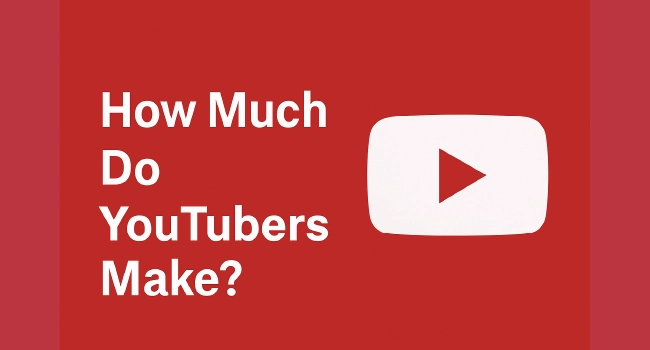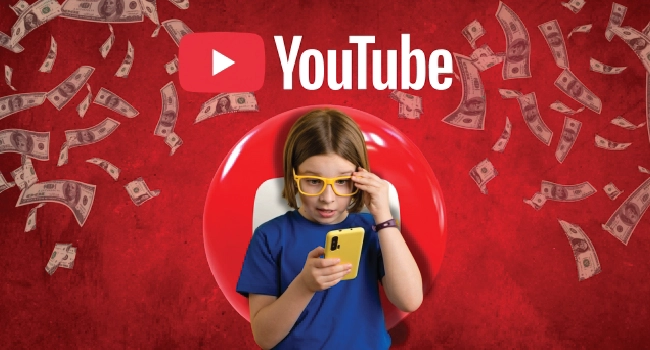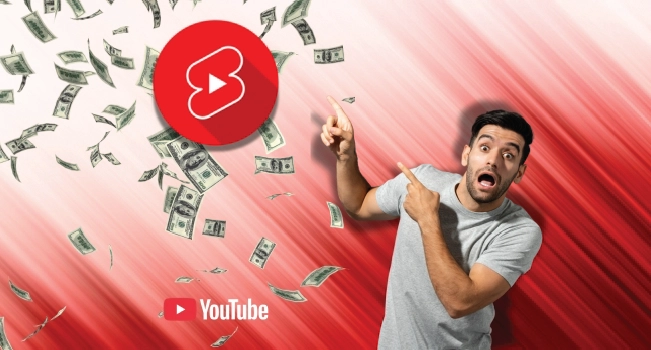
How much do YouTubers make is one of the first questions every new creator asks. The truth is, there’s no single answer. Some creators bring in just a few dollars a month, while others turn their channels into six-figure businesses. The difference comes down to views, niche, country, and the mix of income streams you use.
In this guide, we’ll break it all down in simple terms. You’ll see exactly how money flows from ads, memberships, Shorts, and other features, along with real examples and numbers.
How YouTubers Make Money
When you ask how much do YouTubers make, the real answer depends on how many of these revenue streams you tap into. YouTube has built a system where ads are just the starting point.
-
Ad Revenue – Ads run before, during, or after videos. You get 55% of what advertisers pay, while YouTube keeps 45%. The actual payout depends on your audience location, the type of ads shown, and how many people see them. Finance and business channels, for example, often earn higher ad rates than gaming or lifestyle channels.
-
YouTube Shorts Ads – For Shorts, all ad money goes into a shared pool. After music licensing costs are deducted, 45% of the remaining revenue is distributed among creators based on their share of total Shorts views. This usually works out to a much lower per-view payout compared to long videos, but Shorts can attract millions of views quickly.
-
YouTube Premium Revenue – When Premium subscribers watch your content, you get paid a portion of their monthly subscription fee. This isn't tied to ads, which makes it a steady bonus for channels with high watch time.
-
Fan Funding (Supers) – Super Chats, Super Stickers, and Super Thanks allow viewers to donate during live streams or regular videos. You keep about 70% after fees. For some streamers, this income can even surpass ad revenue during popular events or game releases.
-
Channel Memberships – Viewers can pay monthly for perks like custom emojis, exclusive content, or badges. You earn 70% of each payment, and this income is recurring, which helps smooth out the ups and downs of ad revenue.
-
Affiliate Links & Shopping – If you promote products with affiliate links, you earn a commission for every sale. Rates usually range from 5% to 20%. For example, a tech creator recommending a $500 gadget could earn $50–$100 per sale through affiliate programs. YouTube also has a shopping integration where viewers can buy directly below your videos.
-
Merchandise Sales – Many creators sell T-shirts, hats, or digital products using YouTube's merch shelf. It connects with print-on-demand services, so you don't need to handle stock or shipping.
-
Brand Deals and Sponsorships – Companies often pay to be featured in your content. These sponsorships for YouTubers can range from $100 for small creators to tens of thousands for larger ones, depending on audience size and niche. Some niches, like finance and tech, attract especially high-paying deals.
When you combine these, the earnings picture becomes much more powerful. Ads may cover your basics, but fan support, memberships, and brand partnerships often provide the real financial stability.
How Much Do YouTubers Make Per View

A question we hear all the time is: how much do YouTubers make for each view? The short answer: it depends on a mix of factors, but there are solid ranges we can use to estimate.
The Basics: CPM vs RPM
-
CPM (Cost Per Mille) – what advertisers pay for 1,000 ad impressions.
-
RPM (Revenue Per Mille) – what you actually take home per 1,000 video views after YouTube's cut and accounting for the fact that not every view gets an ad.
For example, if an advertiser pays $10 CPM, YouTube takes 45%, and only 60% of your views show ads, your RPM might land around $3–$4.
Average Earnings Per View
Based on reported data from creators, here's what you can expect:
| Views | Low Estimate | Mid Estimate | High Estimate |
|---|---|---|---|
| 1,000 | $1 | $3 | $5+ |
| 100,000 | $120 | $300 | $500+ |
| 1,000,000 | $2,500 | $3,500 | $5,000+ |
These are ballpark numbers for long-form videos. The actual result depends heavily on niche and audience location.
Niche Differences
Not all niches are equal:
-
Finance, tech, and business: highest RPMs, often $10+ per 1,000 views. Advertisers here pay more because customers are high-value.
-
Lifestyle, gaming, entertainment: usually $2–$4 per 1,000 views. Larger audiences but less targeted spending.
-
Kids content: often lower, around $1–$2, because of ad restrictions.
Geographic Differences
Where your viewers live matters just as much:
-
United States, UK, Canada, Australia: RPMs are highest.
-
India, Philippines, Latin America: lower rates, often $0.50–$1.50 per 1,000 views.
-
Mixed audiences: creators with global reach usually fall in the middle.
Seasonality
Ad rates swing across the year:
-
Q4 (Oct–Dec): advertisers spend big for the holidays, so RPMs can double.
-
Q1 (Jan–Mar): rates drop, sometimes by half, because companies cut budgets after the holidays.
Real-World Example
Imagine a tech creator in the US:
-
1 million views in December.
-
CPM: $15.
-
Ads shown on 70% of views.
-
After YouTube's cut, they take home around $5,800.
Now compare a gaming creator in India:
-
Same 1 million views.
-
CPM: $2.
-
Ads shown on 50% of views.
-
Payout after YouTube's cut: closer to $550.
Same number of views, wildly different outcomes.
Key Takeaway
On average, you can expect $2–$5 per 1,000 views. Some creators beat this by focusing on high-paying niches and audiences, while others need much higher view counts to see the same income.
How Much Do YouTubers Make from YouTube Shorts

If you've been posting Shorts, you might wonder: how much do YouTubers make from this format compared to long videos? The payout model is different, and that's why many creators see lower earnings per view.
How Shorts Revenue Works
-
All ads shown between Shorts go into a shared pool.
-
YouTube first covers music licensing costs.
-
From the remainder, 45% is distributed to creators based on their share of total Shorts views.
-
That means you're sharing the pot with every other Shorts creator.
Average Earnings for Shorts
Creators often report much lower RPMs here:
| Shorts Views | Estimated Earnings |
|---|---|
| 1,000 | $0.05 – $0.20 |
| 100,000 | $5 – $20 |
| 1,000,000 | $50 – $200 |
Why Shorts Pay Less
-
Shorter content = fewer or no mid-roll ads.
-
Broader audience = lower advertiser targeting.
-
Shared pool system = less control over ad rates.
Real-World Example: A creator posting comedy Shorts may see $150 from 1 million views. On the other hand, a cooking Shorts channel with strong US viewership might bring in $200 for the same 1 million. Compare that to long-form creators who might earn $3,000+ from those same million views.
What Shorts Are Good For
horts aren’t usually the main money-maker, but they’re incredible for:
-
Driving rapid subscriber growth.
-
Building awareness for a channel.
-
Pushing viewers toward long-form videos, where ad rates are higher.
Other Monetization Streams That Boost Earnings

When you look at how much do YouTubers make, ads and Shorts are just part of the story. Many creators boost their income through other features that can sometimes pay even more reliably.
Channel Memberships
Fans can pay a monthly fee for perks like badges, emojis, or exclusive videos. You keep about 70% of the payment. For example:
-
100 members at $5 each = $350 per month.
-
1,000 members = $3,500 per month.
Fan Funding (Supers)
Viewers can support you directly with Super Chats, Super Stickers, or Super Thanks. If a live stream pulls in $500 in Supers, you'll take home around $350 after YouTube's cut.
Sponsorships and Brand Deals
Brands often pay to appear in your content. These deals can start around $100 for small creators and scale into the tens of thousands for larger channels. For some niches, this income outpaces ads entirely.
Affiliate Links and Shopping
By recommending products, you can earn a commission per sale. For example, promoting a $200 gadget at a 10% rate earns you $20 each time someone buys through your link. YouTube's shopping tools make this easier by letting viewers shop directly under your videos.
Why Subscribers Matter
Many of these features unlock once you join the YouTube Partner Program. That's why people ask how many subscribers to get paid on YouTube. The threshold is 1,000 subscribers plus 4,000 watch hours in the past year, or 10 million Shorts views in 90 days. Once you cross that, you can access ads, memberships, and more.
If you're just starting out, reaching that first 1,000 can feel slow. Every subscriber counts, and the sooner you hit the requirement, the sooner you can start earning.
That's where we can help. With our trusted growth service, you can buy YouTube subscribers to speed up your journey. It's a safe, effective way to build momentum, boost your credibility, and unlock monetization faster. The sooner you reach that line, the sooner the money starts flowing.
Factors That Affect How Much YouTubers Make
It's easy to look at averages, but the truth is that how much do YouTubers make varies a lot. Two creators with the same number of views can earn very different amounts. Here are the main factors that shape your earnings:
Niche and Industry
Some niches attract higher-paying advertisers. Finance, tech, and business channels often see $10+ RPM, while gaming, lifestyle, and entertainment average closer to $2–$4. Kids' content is even lower due to ad restrictions.
Audience Location
Advertisers pay more for audiences in the US, UK, Canada, and Australia. A million US-based views can bring in thousands more than a million views from lower-paying countries.
Ad Formats
Not all ads are equal. Skippable ads pay less than non-skippable ones. Mid-roll ads on longer videos can also increase earnings compared to shorter uploads.
Seasonality
Ad spending changes across the year. Q4 is a goldmine because of holiday marketing. Q1, on the other hand, usually sees the lowest rates.
Viewer Engagement
The longer people watch, the more ads YouTube can serve. Strong engagement also signals YouTube's algorithm to push your content further, which means more opportunities to earn.
These factors are why one creator can earn $500 for 1 million views while another earns $5,000 for the same number.
Conclusion
At the end of the day, the answer to how much do YouTubers make depends on many moving parts. Ads give you a foundation, but real income often comes from combining memberships, Supers, sponsorships, and affiliate deals. A million views might mean $2,500 in one niche and $10,000 in another.
If you’re just starting out, don’t feel discouraged by small numbers. Every subscriber and every view builds toward larger opportunities. Focus on consistent uploads, explore different revenue streams, and keep learning what works best for your audience.
FAQs | Frequently Asked Questions |
Do YouTubers get paid if viewers skip ads?
Yes, but the payout is usually lower. Skippable ads only generate income if viewers watch long enough for the advertiser to be charged.
Do YouTubers make money from old videos?
They do. As long as a video is monetized and continues getting views, it can earn ad revenue months or even years after upload.
How much can YouTubers earn from live streaming?
During live streams, creators can make money through ads, Super Chats, Super Stickers, and channel memberships. Popular streamers often earn hundreds or even thousands in a single session.
Do all YouTubers get paid monthly?
Payments are monthly, but only if earnings reach the $100 payout threshold. If not, the balance carries over until you hit it.
